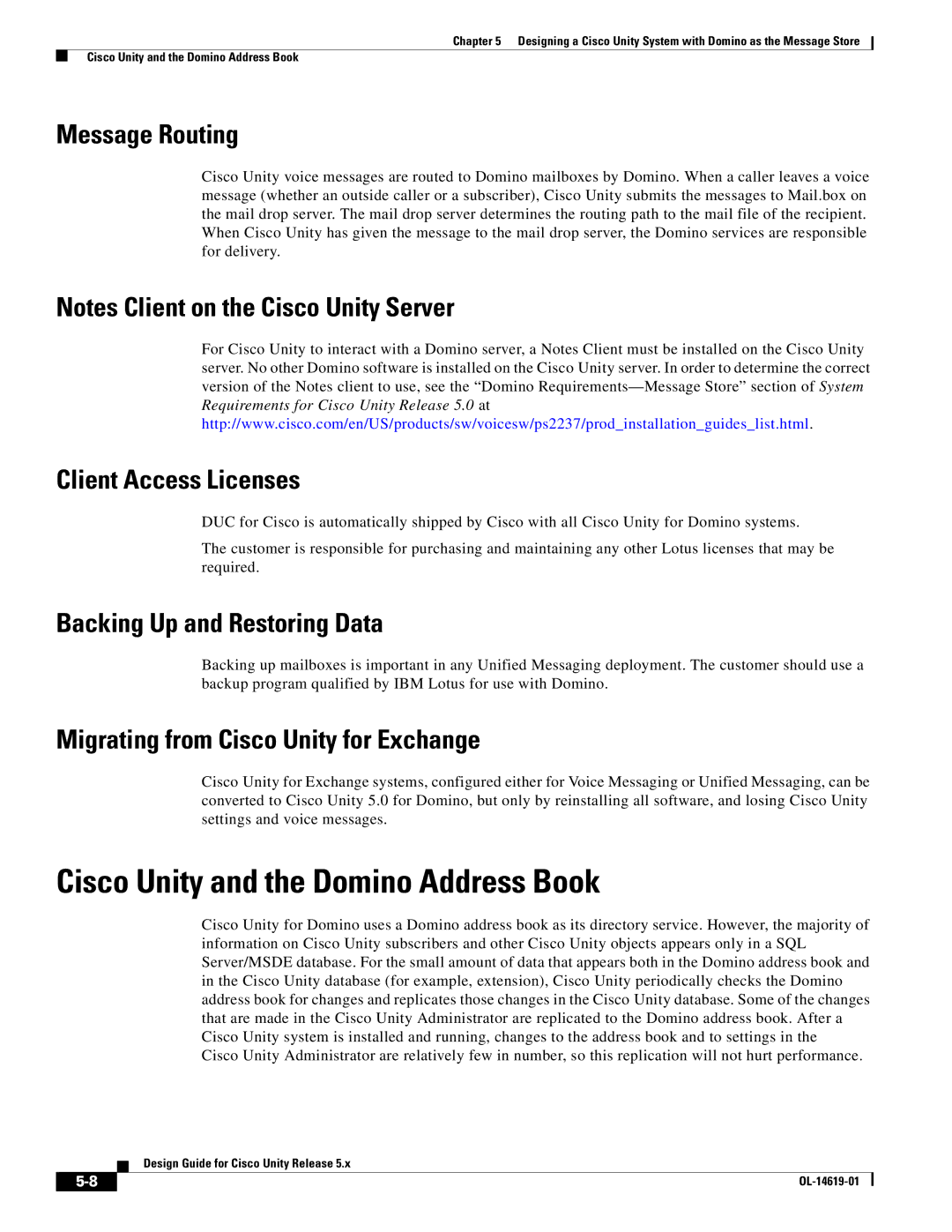
Chapter 5 Designing a Cisco Unity System with Domino as the Message Store
Cisco Unity and the Domino Address Book
Message Routing
Cisco Unity voice messages are routed to Domino mailboxes by Domino. When a caller leaves a voice message (whether an outside caller or a subscriber), Cisco Unity submits the messages to Mail.box on the mail drop server. The mail drop server determines the routing path to the mail file of the recipient. When Cisco Unity has given the message to the mail drop server, the Domino services are responsible for delivery.
Notes Client on the Cisco Unity Server
For Cisco Unity to interact with a Domino server, a Notes Client must be installed on the Cisco Unity server. No other Domino software is installed on the Cisco Unity server. In order to determine the correct version of the Notes client to use, see the “Domino
Client Access Licenses
DUC for Cisco is automatically shipped by Cisco with all Cisco Unity for Domino systems.
The customer is responsible for purchasing and maintaining any other Lotus licenses that may be required.
Backing Up and Restoring Data
Backing up mailboxes is important in any Unified Messaging deployment. The customer should use a backup program qualified by IBM Lotus for use with Domino.
Migrating from Cisco Unity for Exchange
Cisco Unity for Exchange systems, configured either for Voice Messaging or Unified Messaging, can be converted to Cisco Unity 5.0 for Domino, but only by reinstalling all software, and losing Cisco Unity settings and voice messages.
Cisco Unity and the Domino Address Book
Cisco Unity for Domino uses a Domino address book as its directory service. However, the majority of information on Cisco Unity subscribers and other Cisco Unity objects appears only in a SQL Server/MSDE database. For the small amount of data that appears both in the Domino address book and in the Cisco Unity database (for example, extension), Cisco Unity periodically checks the Domino address book for changes and replicates those changes in the Cisco Unity database. Some of the changes that are made in the Cisco Unity Administrator are replicated to the Domino address book. After a Cisco Unity system is installed and running, changes to the address book and to settings in the Cisco Unity Administrator are relatively few in number, so this replication will not hurt performance.
Design Guide for Cisco Unity Release 5.x
| ||
|
